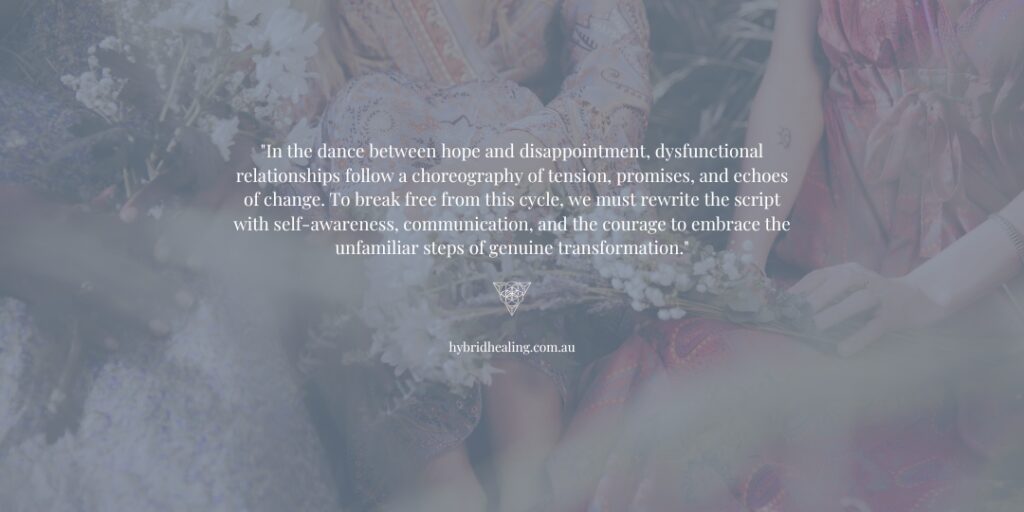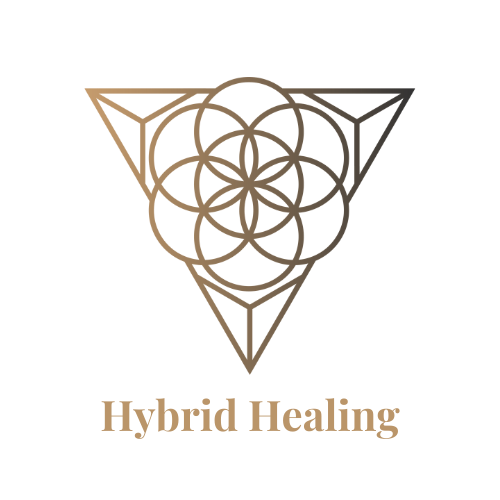
In the intricate landscape of human relationships, a recurring pattern often emerges, known as the Cycle of Hope and Disappointment. This cycle encapsulates the rollercoaster of emotions that individuals experience when trapped in dysfunctional relationships characterized by tension, conflict, apologies, and unfulfilled promises of change. Despite the initial glimmers of hope for positive transformation, these unhealthy patterns tend to resurface, leading to a cycle of hope followed by crushing disappointment. Let’s delve into the dynamics of this cycle, explore its psychological underpinnings, and offer insights into breaking free from its grasp.
The Cycle Unveiled
The Cycle of Hope and Disappointment is a phenomenon that occurs within relationships marked by dysfunction, whether they be romantic, familial, or even professional. This cycle typically involves four distinct phases:
Tension: The cycle often begins with a growing tension in the relationship. This tension arises from unresolved conflicts, unmet expectations, and unaddressed issues. Communication becomes strained, and negative emotions begin to dominate interactions.
Conflict: Tension escalates into open conflicts, which can manifest as arguments, disagreements, or emotional distancing. These conflicts intensify as both parties struggle to assert their viewpoints and needs, often leading to hurtful exchanges.
Apologies and Promises: Following a conflict, one or both parties may recognize the need to repair the relationship. Apologies are offered, promises of change are made, and there’s a renewed commitment to working things out. This phase provides a glimmer of hope that the relationship could improve.
Return to Unhealthy Patterns: Despite the initial promises of change, old patterns resurface. Behaviors that were meant to change often revert to their previous state, and the cycle starts anew. This return to unhealthy dynamics can stem from deep-seated habits, unresolved issues, or a lack of genuine effort to transform.
The Psychological Underpinnings
Understanding the psychological mechanisms at play within the Cycle of Hope and Disappointment can shed light on why individuals find themselves trapped in this repetitive pattern.
Hope and Optimism: Human nature is inherently hopeful and optimistic. When promises of change are made, individuals often grasp onto the hope that the relationship will improve. This hope becomes a powerful driving force, fostering the belief that this time things will be different.
Fear of Change: Change, even positive change, can be daunting. People might resist altering familiar behaviors and patterns, opting for what is known and comfortable, even if it’s dysfunctional. This fear can hinder genuine efforts towards transformation.
Cognitive Dissonance: Cognitive dissonance occurs when there’s a mismatch between beliefs and actions. When someone promises change but fails to follow through, it creates psychological discomfort. To alleviate this discomfort, individuals might rationalize their behaviour or give second chances, perpetuating the cycle.
Breaking the Cycle
Escaping the Cycle of Hope and Disappointment requires awareness, commitment, and often external support:
Self-Awareness: Recognizing the cycle is the first step. Acknowledge the patterns, triggers, and emotions that contribute to the dysfunctional dynamic.
Open Communication: Foster honest and open communication within the relationship. Address concerns, needs, and expectations openly, allowing both parties to work together to find solutions.
Realistic Expectations: Replace unrealistic expectations with realistic ones. Change takes time, and setbacks are normal. Patience and perseverance are crucial.
Professional Help: In some cases, seeking therapy or counselling can provide valuable tools for breaking the cycle. A neutral third party can offer insights and strategies for transformation.
The Cycle of Hope and Disappointment is a complex interplay of human psychology and relationship dynamics. It’s crucial to recognize that breaking free from this cycle requires effort, self-awareness, and a willingness to face uncomfortable truths. By understanding the cycle’s stages and the underlying psychological factors, individuals can take proactive steps toward healthier relationships, either by fostering change within the existing dynamic or, in some cases, by choosing to move on from relationships that perpetuate this cycle.
Ultimately, the journey toward healthier relationships begins with a commitment to one’s own well-being and the courage to break free from destructive patterns.
We’ve created a brand new 4 part masterclass that can help you understand and cultivate intentions, elevate your standards, start saying no to negativity and master boundaries in “The Art of Empowered Living” You can join HERE
Click the link below to learn more about our program “The Path to Resilience and Self-Love”, where you will learn how to overcome destructive patterns and build better relationships, attracting more of the good things in life that you desire. It’s time to shine as the magnificent individual you were always meant to be!
Join our program “The Path to Resilience and Self Love “HERE” Looking forward to seeing you on the inside.
If you are not ready to take that step just yet, you can join us in our support community, where we gather together with like-minded individuals to share education and information on regulating our nervous system, healing trauma and identifying sabotaging patterns. Join here READY TO HEAL YOUR HEART
Warm regards
Loretta and the team at Hybrid Healing 🖤
P.S. Check out our FREE tool for helping you manage intense or overwhelming emotions HERE
P.P.S Matrix Reimprinting is a technique you can use to help you uncover sabotaging patterns and beliefs, and help you imprint healthy patterns that support your well-being. To check out the FREE training on clearing your blocks to success, and discover Matrix reimprinting, click HERE
Disclaimer: This information is provided for educational purposes only based on our own personal experiences. Your personal circumstances may differ. This is in no way a replacement for professional medical advice or medication. Please seek medical advice prior to performing any of these activities.

Recent Comments